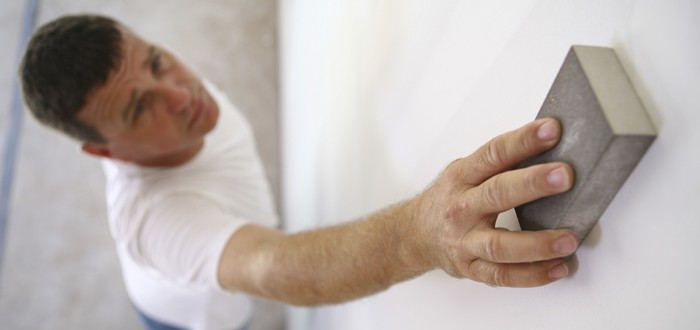If you were a do-it-yourself drywall finisher, your risk of asbestos exposure and mesothelioma was likely less than if you didn’t finish drywall but happened to be near where drywall finishing was occurring.
Strange but true, according to research published in the November issue of the journal Risk Analysis, an official publication of the Society for Risk Analysis.
The researchers weighed the asbestos exposure and mesothelioma risks posed by sanding the joint compound that customarily is used on drywall.
Lead author Fred W. Boelter, C.I.H., P.E., B.C.E.E., who co-owns a large Chicago-based environmental consulting firm, wrote that joint compound dust exposure hasn’t been studied thoroughly in the past.
The researchers noted that it was once standard practice with some manufacturers to put asbestos into drywall joint compound. Thankfully, this practice was abandoned by the 1980s.
Joint compound is the mushy material that drywallers apply to fill the space between abutting sheets of drywall and cover up the heads of the nails or screws that hold the sheets in place.
After the compound dries, it’s sanded flush with the sheets. However, sanding throws thick clouds of joint compound dust into the air.
Some of that dust can find its way into the lungs of the finisher and bystanders. The researchers wanted to understand who gets it worst.
Mesothelioma Risk Lowest For DIYer
What they learned was that the guy who gets it worst is the bystander — at least compared to how bad the DIYer gets it.
But the bystander in this study wasn’t a DIYer neighbor who stopped by for a beer and to chat while watching the DIYer work.
The bystander in this study was a non-drywall tradesman at a construction site where drywall finishing happened to be taking place.
Still, the asbestos exposure and mesothelioma risk to the bystander wasn’t as great as that faced by the tradesman who does a little of everything, including drywall installation and finishing.
And even that tradesman’s risk of asbestos exposure and mesothelioma paled next to the risk encountered by the one who specializes in drywall work, the researchers noted.
The researchers conducted their study by soliciting input from veteran drywallers, using their own observations, and reviewing the available literature.
From all this they were able to create an exposure scenario for each of four groups of drywall finishers — the specialist, the generalist, the tradesman bystander and the do-it-yourselfer.
The researchers then took a mathematical model they previously developed and applied it to each of the exposure scenarios, after factoring in the amount and type of asbestos they thought would be encountered.
This allowed them to define the boundaries of the area where the dust would be in relationship to each type of drywaller’s personal breathing zone.
The mathematical model employed by the researchers is one that Boelter had a hand in devising.
He and his colleagues wrote about it in the September 2011 issue of the Journal of Occupational Environmental Hygiene.
At the time, they were testing the model as a tool to predict time-weighted average concentrations — Ctwa — of dust emitted during the sanding of drywall joint compound.
They found that the model worked better than expected. It predicted dust Ctwa “up to an order of magnitude greater than was measured,” they wrote.
Asbestos Exposure Predictor
More recently, Boelter was involved in research to predict how much asbestos exposure a person could expect to suffer in various industrial environments.
Writing in the January 2014 issue of Inhalation Toxicology, Boelter and his colleagues described use of a cumulative retrospective exposure assessment tool (REA) as a predictor of amphibole asbestos lung burden.
Amphibole asbestos is the most dangerous form of the toxic mineral because its fibers, once embedded in your lungs, can’t be expelled.
In this study, the researchers sought to pair REA with an asbestos lung-burden analysis covering various exposure scenarios.

